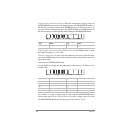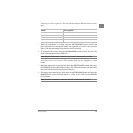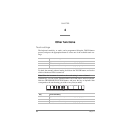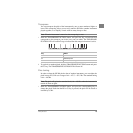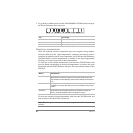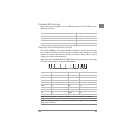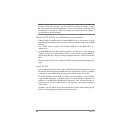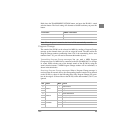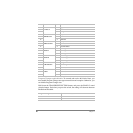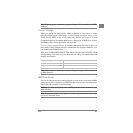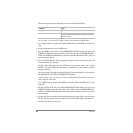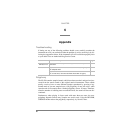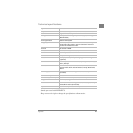
24 Chapter 5
Note: In Layer mode, the second sound transmits on the following channel. For
example, if you select channel 7, the first sound will transmit on channel 7, while
the second sound will transmit on channel 8. If you select channel 16, the first sound
will transmit on channel 16, while the second sound will transmit on channel 1
(cycling back to the first channel).
Using the SP-200 as a multitimbral tone generator
When SP-200 is controlled from an external MIDI device, it can work as a 16-part
multitimbral tone generator. You can select a different sound on each of the 16 MIDI
channels.
1 Use a MIDI cable to connect the SP-200's MIDI IN to the MIDI OUT of a
sequencer etc.
2 Transmit MIDI data from the connected sequencer (or other device). See “Program
Change” on page 25 for instructions on how to select a sound using the MIDI Pro-
gram Change message. Program Change reception should be activated on the SP-
200.
Read the other devices user’s manual for details on sending Program Change mes-
sages.
Local On/Off
Local is the parameter that allows you to establish whether the keyboard has to play
the internal sounds and transmit MIDI data at the same time (Local On), or whether
it just has to transmit MIDI data and not play the internal sound (Local Off).
Local Off should be chosen when you wish to use the SP-200 as a mute keyboard,
to play another instrument. It should be chosen also when SP-200 is connected to a
sequencer via its MIDI IN and MIDI OUT connectors. This will avoid the notes to
be played twice, by the keyboard and by the sequencer, producing an annoying
“echo” effect.
Normally, you will choose Local On (automatically selected when turning the SP-
200 on), so that playing the keyboard will produce sound.



